
Chronic pain can overshadow daily life, tempting people to avoid activity for fear of worsening discomfort. But experts note long-term inactivity does more harm, causing weakness, stiffness, poor circulation, and weight gain. The key is gentle, targeted exercise that aids without strain.
Professional guidance is vital. When choosing exercises is tough, focus on effective moves recommended by physical therapists—carefully selected to address root causes of issues like back pain, boosting strength, balance, and joint health.
We’ve used expertise from Mallory Behenna, DPT, of Brooks Rehabilitation, who condensed her knowledge into a list of effective exercises. These target major muscle groups behind most pain or imbalance. Integrating them builds a foundation for a pain-free life, enabling easy movement.
Dr. Behenna says her exercises target muscles working together to keep us upright. A weak group forces others to compensate, leading to inefficiency, dysfunction, and potential chronic pain. These movements also promote joint health by encouraging synovial fluid, which lubricates joints, reducing friction, pain, and inflammation while boosting mobility.
To make them part of daily life, Dr. Behenna suggests “habit stacking”—linking exercises to daily activities. Consistency matters more than perfection; breaking them up is better than skipping.
Here are the first six expert-backed exercises—your pain-crushing team: Dr. Behenna’s five foundational moves, plus another that strengthens from within.
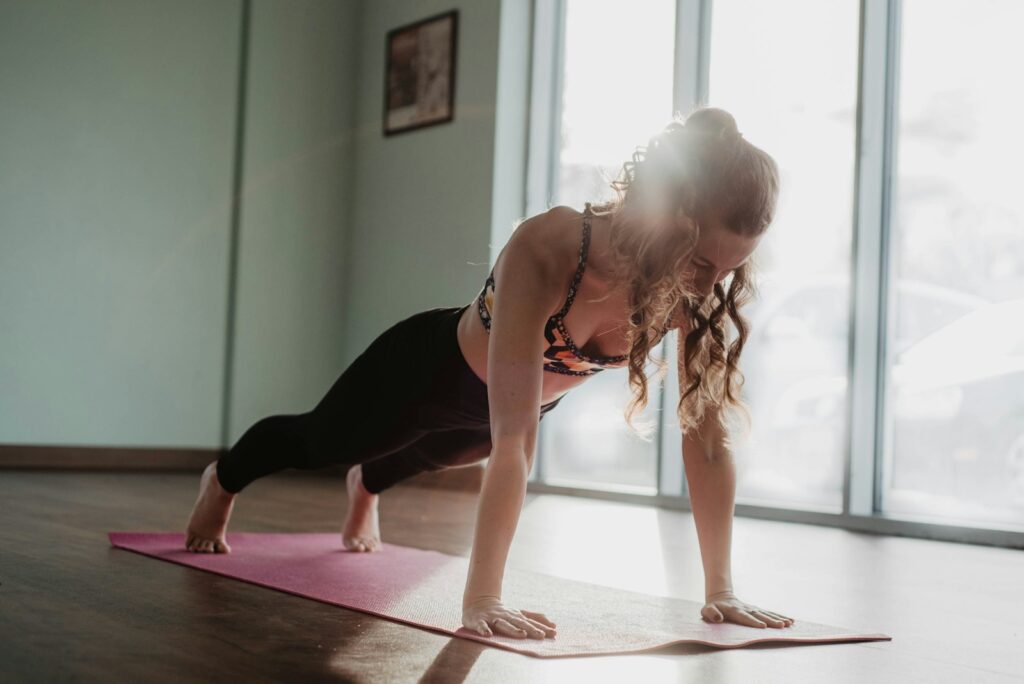
1. **Plank**
The plank is a cornerstone of core strength, widely loved for its effectiveness and sometimes dreaded for its intensity, yet it tops Dr. Behenna’s list for good reason. It’s an exercise that directly works your core stability and endurance, which are critical components for overall balance and stability in your daily life. Beyond that, a strong core provides essential protection for your spine, acting as a natural corset that stabilizes your entire torso.
To perform a plank, you’ll hold your body in the top position of a push-up. The goal is to maintain a perfectly straight line from your head to your feet, engaging your abdominal muscles to prevent your hips from either rising too high or sagging too low. Dr. Behenna recommends aiming to hold this position for 60 seconds at a time to truly build that foundational endurance.
Common form mistakes include allowing the hips to either rise up or sag down too far, which can place undue stress on the lower back rather than engaging the core effectively. If holding the perfectly straight line for 60 seconds is too challenging initially, you can modify the movement by dropping to your knees or supporting yourself on your forearms, gradually building up your strength. The key is to maintain proper alignment to maximize the benefits for your core and spine.

2. **Step-ups**
Step-ups are an incredibly effective exercise that might seem simple, but they tackle a crucial area of neglect: single-leg strengthening. Dr. Behenna emphasizes that we perform single-leg functional activities every single day, whether it’s stepping up curbs, ascending stairs, or simply walking. Over time, many of us develop a preference for leading with one limb, which can lead to an asymmetry of strength between our left and right legs. This asymmetry can result in an overall imbalance or instability, making us more susceptible to falls and injuries.
To perform step-ups, you’ll use the bottom of a staircase or a sturdy step stool, typically four to eight inches tall. Step up onto the surface with one leg, using a railing, counter, or other stable surface for balance if needed. The movement is about control, so slowly lower yourself back down with the same leg, then step back up. Aim for 10 to 15 repetitions for three sets on each leg, ensuring you work both sides evenly.
A key form mistake to avoid is letting your knee track improperly during the movement. Always make sure your knee tracks directly over your second toe as you step up and down. This ensures that you’re strengthening the correct muscles around the knee joint and avoiding unnecessary stress on your joint and ligaments, preventing potential pain and injury in the long run. For an added challenge, you can bring your bottom knee toward your chest as you step up, further engaging your core and hip flexors.
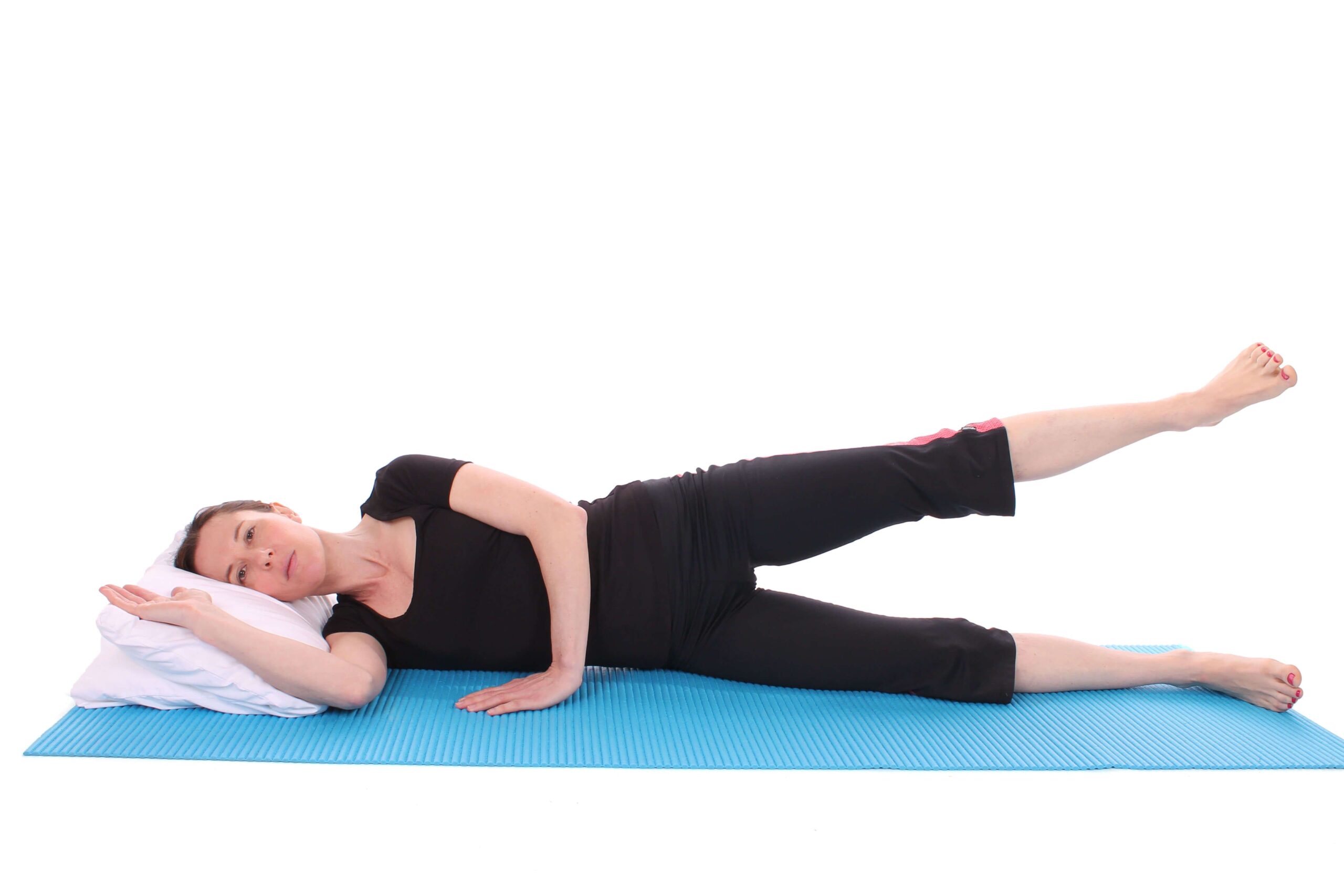
3. **Side-lying Hip Abduction**
For many people, strengthening the glutes can lead to dramatic improvements in overall stability and pain relief, and the side-lying hip abduction is a prime exercise for this. Dr. Behenna highlights its particular effectiveness in targeting the gluteus medius, a crucial muscle located on the side of your hip. When these hip abductor muscles are weak, you might notice your hip dropping either away from or towards the weak side, which can significantly affect your safety and stability while walking. Prolonged weakness in this area can also lead to nagging pain in the hips or lower back as other muscles compensate for the deficit.
To execute this move, lie down on one side of your body, bending your bottom knee for stability while keeping your top knee straight. From this position, lift your top, straight leg directly into the air, making sure to keep your heel slightly behind your hip. This slight extension is key to properly activating the gluteus medius. Slowly lower your leg back down with control. Repeat this movement 10 to 15 times for three sets on each side to ensure balanced strength development.
There are several common compensation patterns that can reduce the effectiveness of this exercise. Dr. Behenna advises against letting your foot drift forward, rolling your foot towards the ceiling, rotating your trunk backward, or hiking your pelvis to initiate the movement. The true benefit comes from isolating the gluteus medius, which requires the hip to be in slight extension—meaning that leg is reaching just slightly behind your body, engaging the target muscle optimally for increased walking stability and pain prevention.
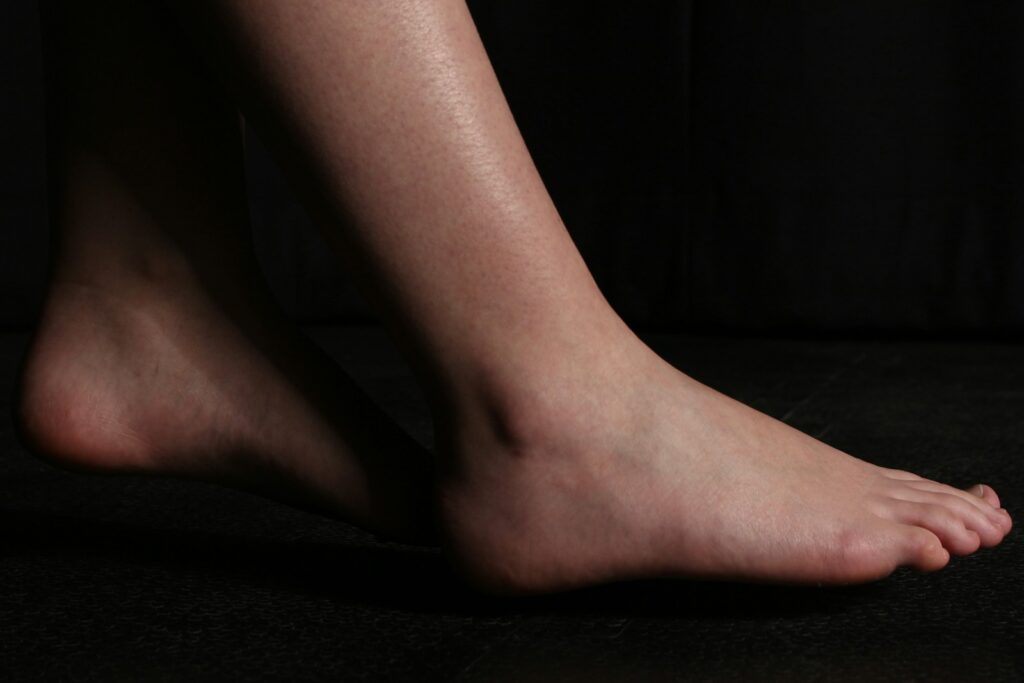
4. **Heel and Toe Raises**
Often overlooked, working your calves and the smaller muscles in your feet is incredibly important for maintaining mobility and creating a stable base for walking. Heel and toe raises specifically target these areas, building strength and gently lengthening muscles that often become tight and knotted from daily activities or prolonged standing. This simple yet powerful exercise helps to activate the intricate network of muscles in your feet, providing a solid foundation for every step you take.
To begin, stand next to a counter or a railing, using both hands lightly for balance only—the goal is for your calf muscles to do the lifting. First, rise up onto your toes as high as you can, then slowly lower back down. Repeat this movement 30 times for two sets. Immediately follow this with toe raises: keep your heels firmly on the ground and lift your toes up towards your shins, repeating this 30 times for two sets.
A crucial form mistake to avoid is using your arms too much to assist with the lift. The hands should be used solely for balance, allowing your calf muscles to be the primary movers. If you want to increase the challenge, try performing both the heel and toe raises with one foot at a time, which significantly increases the demand on the individual calf and foot muscles, further enhancing their strength and stability for improved overall mobility and a sturdy stride.
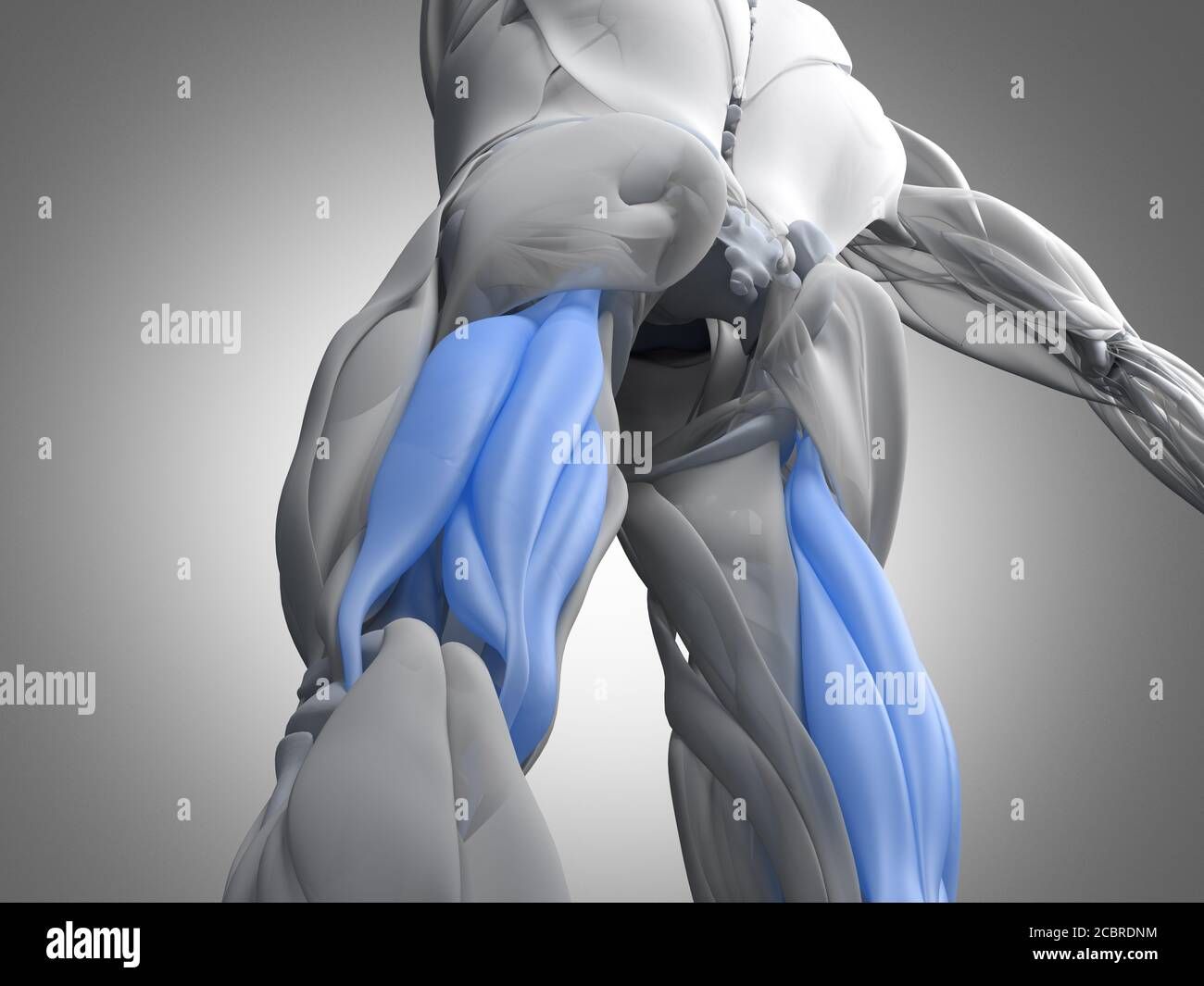
5. **Hamstring and Calf Stretches**
While building strength is vital, ensuring your muscles aren’t overly tight is equally crucial for preventing injuries and maintaining a pain-free body. These hamstring and calf stretches are the perfect complement to the strengthening exercises like heel raises and step-ups, providing a balanced approach to lower body health. Tight hamstrings, for instance, can pull on the pelvis, leading to increased stress on the lower back when standing, which is a common cause of chronic back pain. Similarly, tight calf muscles can contribute to foot and knee pain, limit overall mobility, and negatively impact your balance and stability.
For the hamstring stretch, sit sideways on the edge of a couch. Place your outside foot flat on the floor, and extend your inside leg straight out in front of you on the couch. Keeping both your knee and your back straight, gently lean forward from your hips until you feel a comfortable stretch along the back of your thigh. Hold this stretch anywhere from 15 to 30 seconds, and repeat it three to five times on each leg to achieve optimal flexibility and release tension.
To stretch your calf, stand facing a wall with both hands resting lightly on the wall for support. Step one foot back into a small lunge position. The key here is to keep the heel of your back foot firmly on the ground as you lean forward towards the wall. You should feel a deep stretch in the calf of your back leg. Hold this stretch for 15 to 30 seconds, repeating it three to five times per leg. A common mistake is to end the stretch too soon; aim for that full 30 seconds for maximum benefit, allowing your muscles to truly lengthen and release.
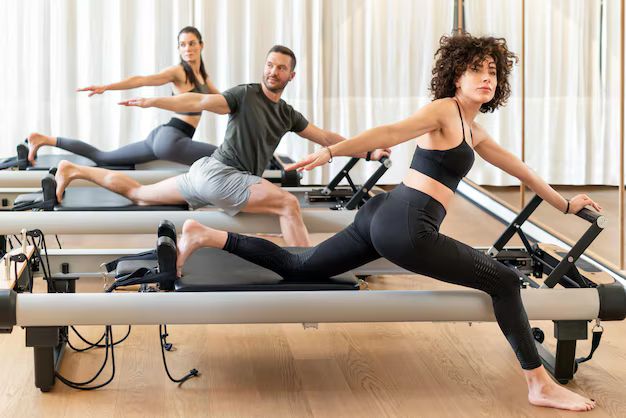
6. **Pilates**
Pilates is more than just a collection of fancy stretches; it’s a holistic movement system that offers profound benefits for pain management by strengthening your core, improving posture, and boosting flexibility. These three factors—a robust core, proper alignment, and supple muscles—are the holy trinity of pain-free movement, making Pilates an indispensable tool in your wellness arsenal. It’s a low-impact exercise that can be easily modified to suit various fitness levels and pain tolerances, making it accessible to almost anyone.
One of the primary benefits of Pilates for pain management is its emphasis on developing a stronger core. A robust and functional core provides unparalleled stability and support for your spine, significantly reducing the stress on the muscles and joints that so often contribute to chronic pain. By engaging these deep stabilizing muscles, Pilates helps your body move with greater efficiency and less compensatory strain.
Furthermore, Pilates is exceptional at improving posture. Poor posture is a major culprit behind muscle strain and imbalances, frequently leading to tension and aches in the neck, shoulders, and back. Through mindful movements and precise alignment principles, Pilates helps you develop proper body mechanics, which not only alleviates existing pain but also actively works to prevent future problems by retraining your body to hold itself in a more optimal, pain-reducing position. Its gentle poses also increase flexibility, lengthening tight muscles and improving range of motion.
The transition from Dr. Behenna’s core-strengthening exercises is smooth to a broader spectrum of low-impact workouts. These methods are championed by experts for their ability to soothe and prevent chronic pain, building on the foundation of stability and strength. They offer gentle yet profound ways to reclaim movement and enhance your quality of life, proving that effective pain management doesn’t always require intense, high-impact routines.
Continuing our journey through expert-recommended strategies for a pain-free life, we delve into more low-impact powerhouses. These exercises are particularly beneficial for those living with chronic pain, as they minimize stress on joints while still delivering significant therapeutic benefits. Each offers a unique pathway to improved mobility, reduced discomfort, and overall enhanced well-being.

7. **Walking**
Sometimes, the simplest activities hold the most profound benefits for our health, and walking stands out as a prime example. It’s a low-impact exercise that’s incredibly gentle on your joints, making it a perfect foundation for managing almost any chronic pain, orthopedic, or neuromuscular condition. The steady, low-to-non-impact pace allows for consistent movement without causing excessive fatigue or strain.
Walking contributes significantly to overall wellness by improving cardiovascular health; regular walking strengthens your heart and lungs, which in turn enhances circulation and helps reduce inflammation throughout the body. This is a critical factor, as inflammation can often contribute to pain. Beyond physical benefits, walking outdoors can also be a wonderful stress reliever, allowing you to connect with nature and clear your mind.
It’s truly a holistic activity that engages various muscle groups, improving strength and stability to support your joints and alleviate discomfort. By boosting mood through the release of endorphins, walking can also help reduce stress and anxiety, factors that are known to worsen pain perception. Promoting healthy weight management further reduces stress on your joints, acting as a preventive measure against future pain.

8. **Swimming**
Few activities can rival swimming when it comes to protecting your joints while still providing a comprehensive full-body workout. The natural buoyancy of water supports your body weight, effectively eliminating strain on key areas like your spine, hips, knees, and ankles. This unique environment allows you to move freely, engaging all major muscle groups in your arms, legs, and core, all without the harsh impact of land-based exercises.
Swimming is an exceptional choice for improving endurance, flexibility, and circulation, alongside enhancing balance and core strength. Its gentle nature makes it an ideal form of cross-training, particularly for individuals aiming to protect injury-prone areas that might be strained by other sports. Moreover, it’s fantastic for cardiovascular health, offering a complete workout that supports your heart and lungs.
To start, opting for relaxed strokes like the backstroke can be beneficial, gradually building up your comfort and stamina in the water. The calming environment of the water combined with the rhythmic nature of swimming can promote deep relaxation and stress reduction, significantly aiding in overall pain management and contributing to a sense of calm.
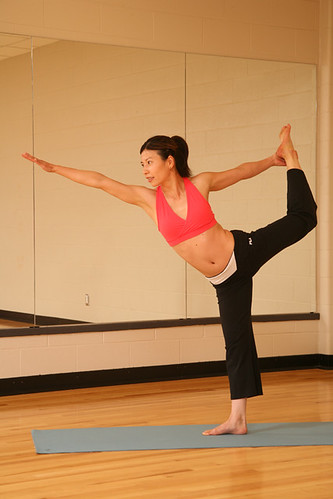
9. **Yoga**
Combining physical postures, controlled breathing exercises, and mindful meditation, yoga offers a truly holistic and powerful approach to pain management. Gentle forms of yoga are particularly beneficial, as they help improve strength and flexibility in ways that support the body and joints without leading to overexertion. This mindful movement system facilitates relaxation, enhances circulation, and promotes proper posture alignment.
Yoga is exceptional at improving flexibility; its poses gently stretch and lengthen your muscles, which increases your range of motion and helps reduce stiffness. Stiffness can be a major contributor to pain, so this lengthening effect is incredibly valuable. Simultaneously, various yoga poses engage and strengthen different muscle groups, building stability around your joints and further reducing discomfort.
The meditative aspect of yoga, coupled with its emphasis on coordinated breathing techniques, is also a potent tool for stress reduction. Stress can unfortunately exacerbate pain, so the relaxation promoted by yoga can help manage how pain is perceived. Furthermore, yoga poses often require balance and coordination, which can help prevent falls and injuries, thereby preempting potential sources of pain.
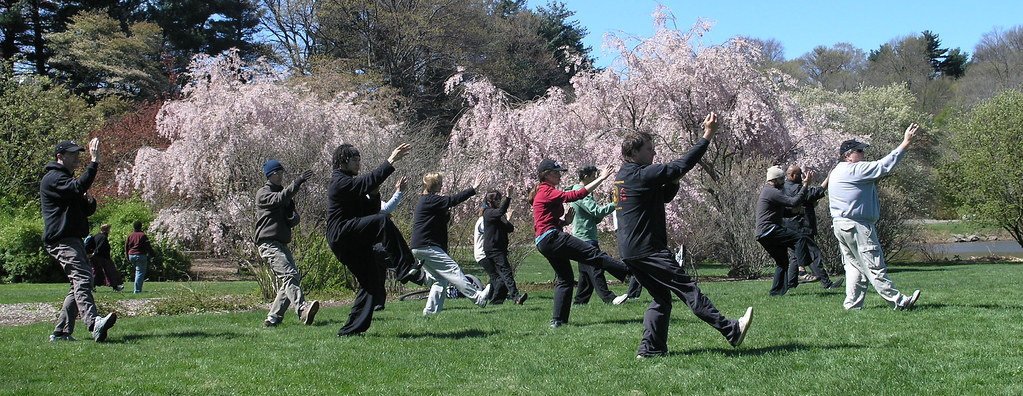
10. **Tai Chi**
Often referred to as “meditation in motion,” Tai Chi is a gentle, ancient Chinese martial art that offers profound benefits for pain management through its unique combination of slow-motion movements, deep breathing, and focused meditation. This approach leverages the powerful mind-body connection to significantly improve balance, posture, coordination, and overall range of motion. It also instills confidence in controlling one’s body, particularly for those navigating chronic pain or physical disability.
The deliberate and flowing sequences of Tai Chi movements, though seemingly simple, subtly strengthen muscles while enhancing mind-body awareness. This heightened awareness is crucial for protecting joints and preventing missteps, which can often lead to pain. The low-impact nature of Tai Chi means it places minimal stress on joints, making it an excellent choice for individuals seeking gentle yet effective exercise.
Studies have consistently shown that Tai Chi can effectively reduce pain and fatigue in people living with chronic pain conditions. The meditative aspect fosters relaxation and reduces stress and anxiety, thereby positively influencing pain perception. It’s a testament to how gentle, controlled movement, combined with mental focus, can be a powerful therapeutic tool for improving physical well-being and managing discomfort.

11. **Cycling**
Cycling, whether on a traditional bicycle outdoors or a stationary bike indoors, provides an excellent cardiovascular workout while significantly minimizing body weight and gravitational impact on your joints. The seated position inherently eases strain on the back and other weight-bearing joints like the hips and knees, making it a highly accessible exercise for many. It’s gentle enough for individuals recovering from hip or knee surgery, yet effective at burning calories quickly.
This pedaling motion boosts muscle tone in the legs and glutes, enhances cardiovascular health, and triggers the release of endorphins, which are your body’s natural pain relievers. To preserve comfort and prevent the progression of arthritic damage, maintaining low resistance levels is key. If regular cycling doesn’t provide sufficient symptom improvement, consulting your doctor about other options, such as phantom limb pain medication, could be considered in specific circumstances.
Overall, cycling offers a fantastic way to stay active, improve your heart health, and strengthen your lower body muscles without the high impact that can often aggravate pain. It’s a versatile exercise that can be adapted to your comfort level and is a strong ally in a pain management strategy.
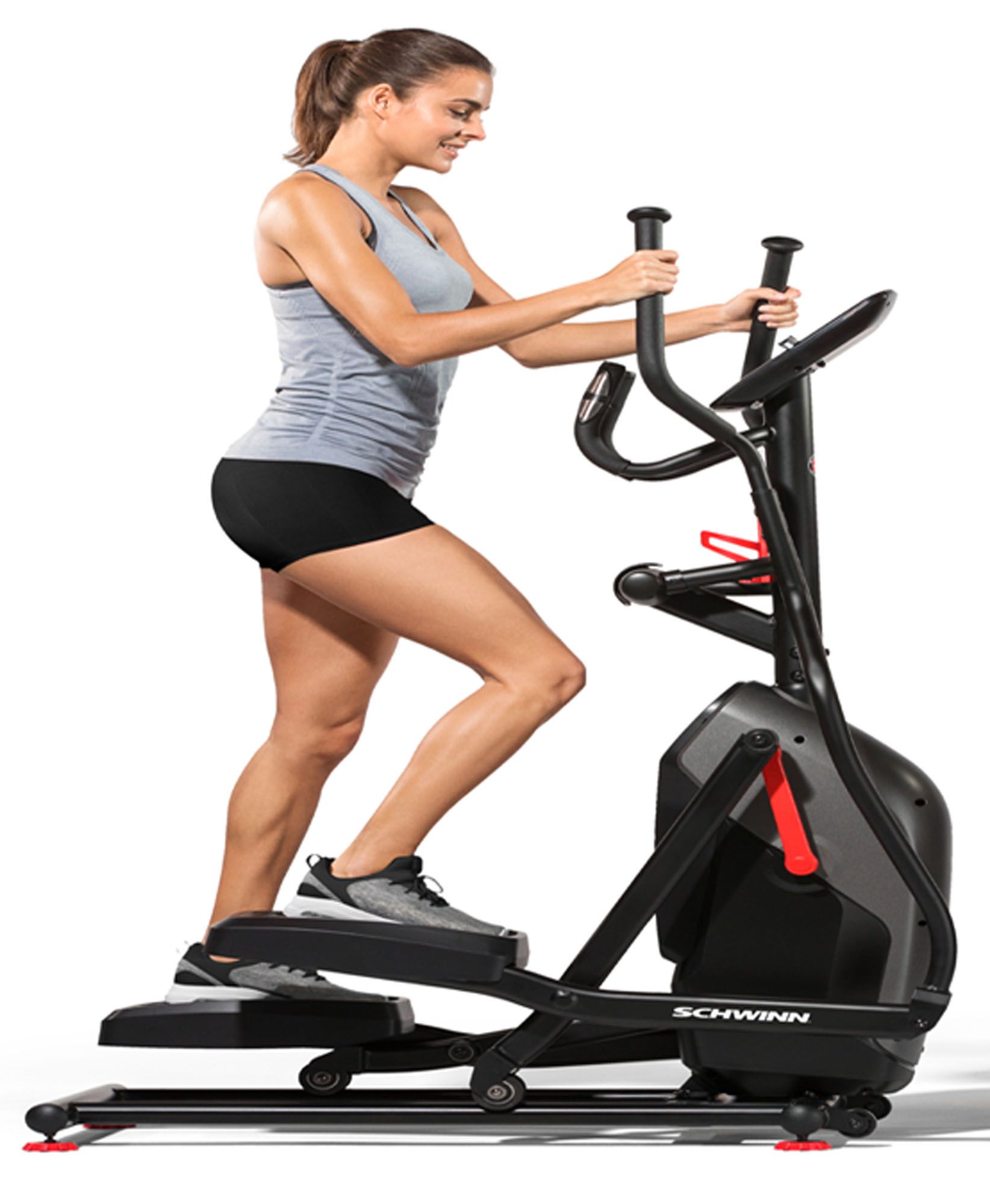
12. **Elliptical Training**
Elliptical training offers a unique and highly beneficial low-impact exercise that brilliantly simulates the motion of running without any of the harsh impact on your joints. This makes it an ideal choice for individuals dealing with knee, ankle, or back pain, as it allows for vigorous cardio conditioning while safeguarding vulnerable areas. The foot plates eliminate direct impact, which is a major advantage for joint health.
This machine provides a comprehensive full-body workout, engaging your legs, arms, and core simultaneously, all while improving cardiovascular health and effectively burning calories. For those managing conditions like arthritis, the elliptical facilitates the cardio conditioning needed for weight management, which is essential for alleviating joint stress.
To maximize benefits and prevent muscle imbalances, you can utilize the cross ramp and resistance features to vary the demands on different muscle groups. Elliptical training allows for smooth, continuous strides that are exceptionally joint-friendly, making it a powerful tool for achieving fitness goals and managing pain without flare-ups.
Expanding your repertoire of pain-fighting exercises can dramatically improve your daily comfort and overall quality of life. As we’ve explored, activities like walking, swimming, yoga, Tai Chi, cycling, and elliptical training offer incredible ‘bang for your buck’ in terms of pain management, mobility enhancement, and holistic wellness. Each provides a unique set of benefits, contributing to a robust and resilient body capable of moving with greater ease and less discomfort.
Remember, the journey to a pain-free life is a collaborative one. While these expert-backed exercises provide a powerful toolkit, consulting with a physical therapist or healthcare professional remains paramount. They can help you tailor an exercise program specifically to your unique needs, ensuring that you’re performing movements safely and effectively. Ultimately, consistency and finding joy in your chosen activities are the keys to long-term success. Embrace movement, listen to your body, and step confidently towards a life where pain is no longer the main character.



